Discover the secret to unlocking the full potential of chia seeds, a superfood celebrated for its remarkable nutrition and versatility. In this comprehensive guide, we delve into the intriguing world of sprouted vs unsprouted chia seeds. Chia seeds, originating from the flowering plant native to southern Mexico, are not just for chia pets. They have taken the health food stores by storm, becoming a staple in healthy lifestyles worldwide.
As a holistic nutrition enthusiast and a devoted advocate of clean eating, I've found a trick over the years that maximizes the health benefits of chia seeds. This guide will explore the process of sprouting chia seeds, a simple yet transformative method that can elevate their nutritional value and enhance their taste. We'll compare sprouted and unsprouted chia seeds in terms of taste, nutrition facts, and benefits, providing you with a step-by-step guide to sprouting these seeds effortlessly at home.
Chia seeds are not just incredibly nutritious; they are also wonderfully versatile. Whether you're whipping up a quick chia pudding, adding them to a smoothie, or using them as an egg replacement in recipes, these seeds offer a powerhouse of healthy fats, essential for overall health. Plus, they're a perfect snack for kids of all ages — our young children adore chia pudding!
Did you know that soaking and sprouting chia seeds can reduce phytic acid, which is known to hinder the absorption of certain nutrients in the digestive tract? This process can unlock a higher level of health benefits from these tiny seeds. We'll also dive into the importance of this process for your health and how it can contribute to a healthy lifestyle.
For those curious about other seed options, don't miss our comparative guide to chia vs. hemp vs. flax seeds. It's an informative read for anyone looking to enrich their diet with nutrient-dense foods. Also, consider our guide to sprouting quinoa!
Stay tuned as we unfold the wonders of chia sprouts and how incorporating them into your diet can promote a healthier, more vibrant life. From their role in a healthy diet to their impact on overall health, this guide has everything you need to know about chia seeds, a true gem in the world of health foods.
Jump to:
What Are Chia Seeds?
Chia seeds, derived from the Salvia Hispanica plant, a member of the mint family, have a rich history that traces back to ancient times. Originating in Central and South America, they were a staple in the diets of civilizations like the Aztecs and Mayans. The name "chia" itself means strength, reflecting the high energy and stamina the seeds were believed to provide. Today, these tiny seeds have gained immense popularity worldwide as a versatile and healthy food item.
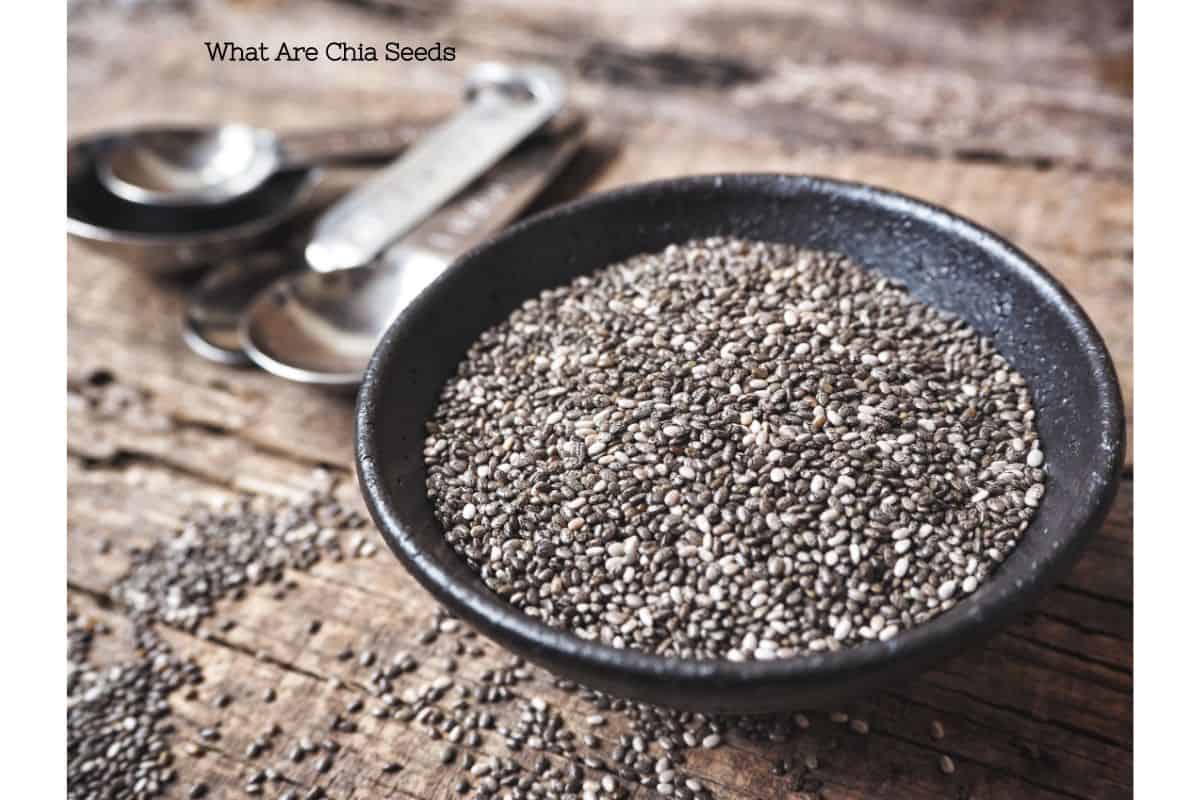
Nutritionally, chia seeds are a powerhouse, packed with essential amino acids, dietary fiber, and fatty acids, including omega-3s. These components play an important role in promoting heart health and preventing cardiovascular diseases. The high content of dietary fiber in chia seeds not only aids in digestive health but also contributes to maintaining a healthy weight. They're also a good source of essential minerals like calcium and magnesium, and vitamins such as vitamin C, which are crucial for overall health, including brain function and immunity.
One of the great things about chia seeds is the different ways they can be used. Available in almost every grocery store, they can be consumed raw, soaked in juice, added to porridge, puddings, and baked goods, or sprinkled on top of salads and yogurt. This versatility makes them an easy addition to any diet.
Chia seeds can also be grown as chia microgreens, a nutrient-dense form of the seeds. To grow chia microgreens, you only need a growing tray, a suitable growing medium, and some basic care. These microgreens contain a concentrated amount of nutrients and can be used in a variety of dishes, adding not just nutritional value but also a fresh, crunchy texture.
Incorporating chia seeds into your diet is undoubtedly a good thing. Their rich content of fatty acids, especially omega-3s, plays a crucial role in maintaining healthy cell membranes and has been linked to improved brain function. Additionally, the presence of digestive enzymes in chia seeds helps in the efficient breakdown of food, aiding in better nutrient absorption.
Chia seeds are much more than just a trendy health food. Their historical significance, impressive nutritional profile, and versatility make them a valuable addition to a balanced diet, potentially aiding in the prevention of various health issues, including cardiovascular diseases. Whether you are enjoying them as part of your breakfast, as a snack, or in your baked goods, chia seeds are a small but mighty ingredient that can make a big difference in your overall health.
Guide to Soaking and Sprouting Chia Seeds
Chia seeds, known for their nutritional benefits and versatility, can be prepared in two distinct ways: soaking and sprouting. While these terms are often used interchangeably, they refer to different processes and result in different uses of the seeds.
Soaking Chia Seeds:
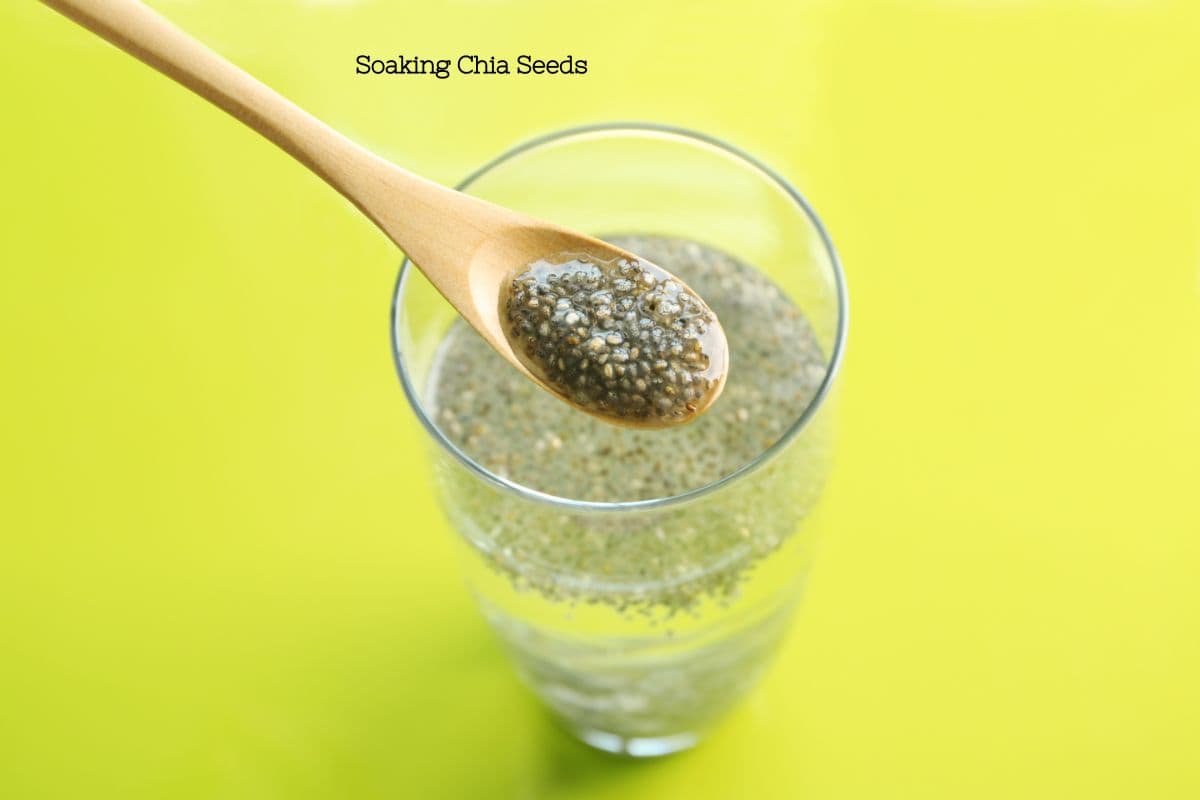
Soaking is the most common way to prepare chia seeds, especially for culinary uses like smoothies, puddings, or egg replacements in recipes. The process is simple:
- Soaking Process:
- Measure the desired amount of chia seeds.
- Add water (usually in a 1:10 ratio of chia seeds to water- or 1:4 ratio depending on desired consistency) and let them soak at room temperature for 20 minutes to an hour.
- The seeds will absorb the water and form a gel-like substance, known as chia gel.
- Uses of Soaked Chia Seeds:
- The resulting chia gel can be used immediately in various recipes.
- It's perfect for smoothies, making a chia seed pudding, or as a thickening agent in various liquids. I love to add a couple of tablespoons of chia seeds to smoothies. By the end of the process, the seeds have already begun to gel and add incredible nutrients to our superfood smoothies!
- Soaked chia seeds can also act as a vegan egg replacement due to their binding properties.
Soaking chia seeds is an easy way to unlock their nutritional value, making them an excellent choice for adding dietary fiber, fatty acids, and essential nutrients to your diet.
Sprouting Chia Seeds:
True sprouting of chia seeds takes the process a step further, allowing the seeds to germinate and grow into chia microgreens. This process involves more time and care:
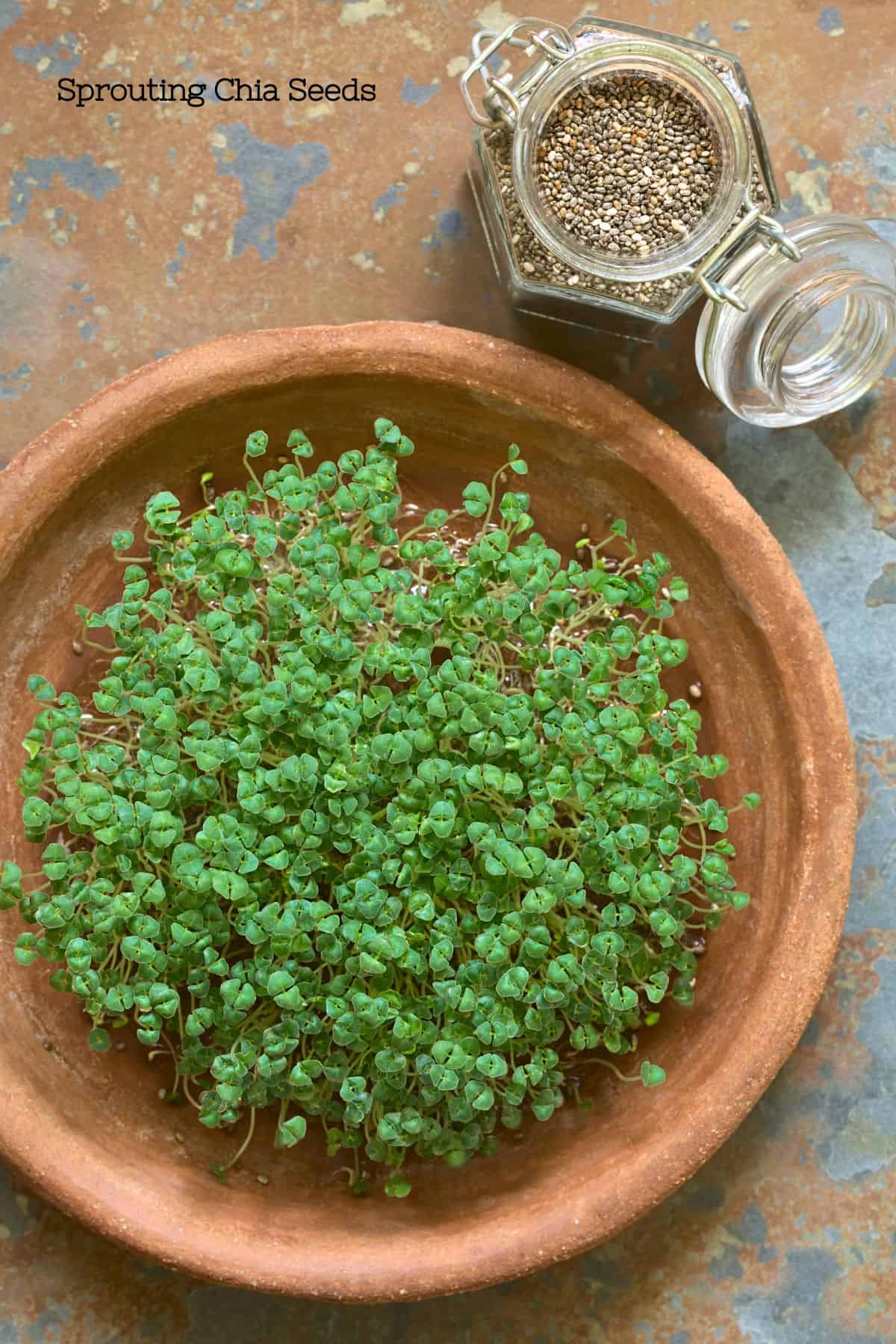
- Sprouting Process:
- Spread a thin layer of chia seeds on a sprouting tray or a flat terracotta dish. Alternatively, you can also use a sprouting jar or mason jar.
- Mist the seeds lightly with water to keep them moist, but not soaked, as they can form a gel and inhibit sprouting.
- Cover the tray with a paper towel to maintain humidity and place it in an area that is just out of direct sunlight.
- Cultivating Chia Microgreens:
- The seeds will start to sprout in a few days.
- Once they have sprouted and grown a few inches, they can be harvested as chia microgreens.
- Uses of Sprouted Chia Seeds:
- Sprouted chia seeds or chia microgreens are a great addition to salads, sandwiches, and other fresh dishes.
- They provide a crunchy texture and a boost of nutrients in their most bioavailable form.
Important Safety Note: Raw sprouts have been known to develop different bacteria that cause a foodborne illness like e coli. So, it is important to cultivate with care and sprout in the refrigerator at 40 degrees or below to avoid bacterial growth. This greatly increases the sprout's shelf life. Do not leave food sitting out for longer than 2 hours.
While most culinary applications of chia seeds require only soaking, sprouting them is a great way to explore their use in fresh, raw dishes. Sprouting chia seeds involves nurturing them until they grow into microgreens, offering a different texture and potentially more bioavailable nutrients. Understanding this distinction can enhance your culinary experiences and allow you to use chia seeds in a variety of healthy and delicious ways.
Nutritional Comparison: Sprouted vs. Unsprouted Chia Seeds
Chia seeds, whether sprouted or unsprouted, are a powerhouse of nutrition. However, the process of sprouting can alter their nutritional profile in significant ways. Understanding these differences is crucial for making informed choices about incorporating these mucilaginous seeds into your diet.
Unsprouted Chia Seeds:
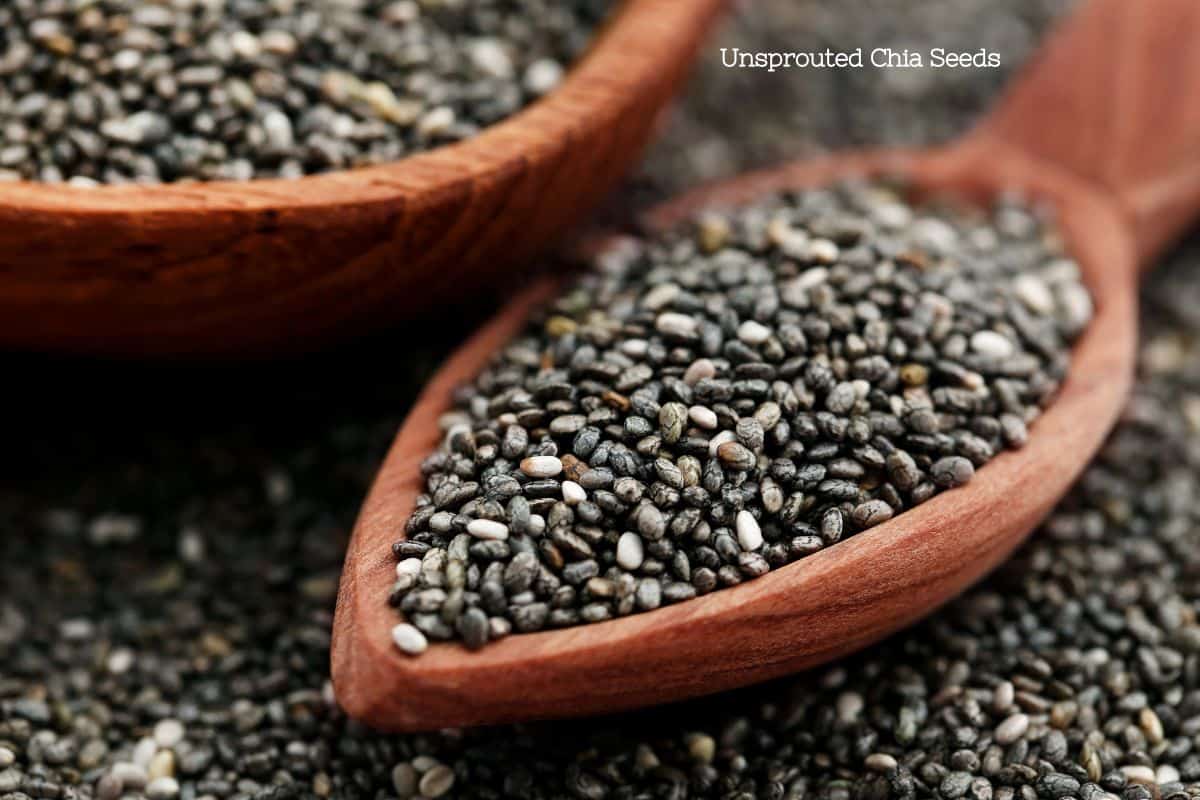
Unsprouted chia seeds are already nutrient-dense. They are renowned for their high content of grams of fiber, omega-3 fatty acids, protein, and various micronutrients like vitamin C, calcium, and magnesium. One of the standout features of unsprouted chia seeds is their high levels of Vitamin E, known for its antioxidant properties that combat free radicals and support human health.
However, unsprouted chia seeds also contain phytic acid, which can bind minerals and reduce their absorption, potentially disrupting the digestive system. While they are still beneficial, the presence of phytic acid means that not all of their nutrients are readily bioavailable.
Sprouted Chia Seeds:
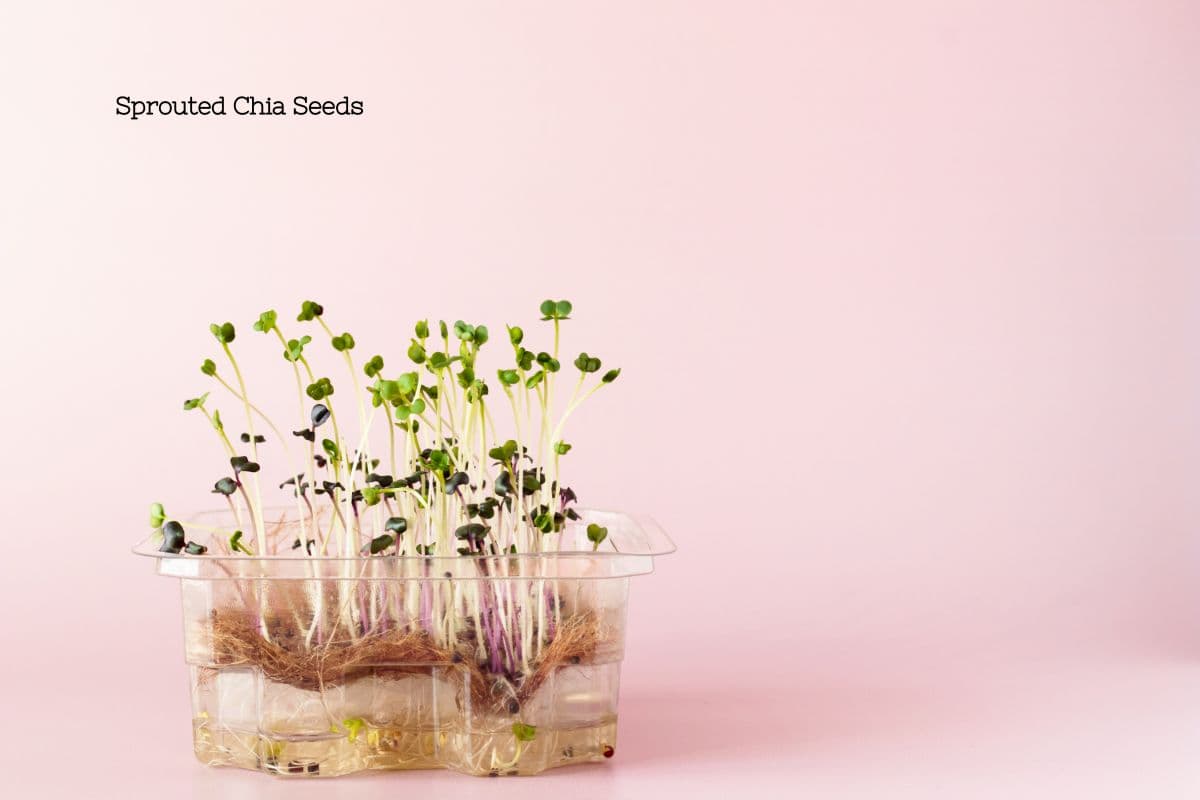
Sprouting chia seeds take their nutritional value a step further. Recent research has shown that sprouted chia seeds have enhanced levels of certain nutrients and bioactive compounds compared to their unsprouted counterparts.
Increased Nutrient Availability:
- The sprouting process reduces the levels of phytic acid in chia seeds, which means a higher availability of nutrients for absorption.
- Sprouted chia seeds are analyzed to have higher levels of micronutrients, as well as phenolic compounds, quercetin, and chlorogenic acid, known for their antioxidant properties.
Digestive Benefits:
- The reduction in phytic acid through sprouting makes these seeds easier on the digestive system.
- Sprouted seeds are often easier to digest, making their nutrients more accessible, especially important for individuals with sensitive digestive systems.
Enhanced Nutritional Profile:
- Sprouted chia seeds may offer similar levels of fiber and fatty acids but with added benefits of increased vitamin and mineral availability as well as antioxidant activity.
- They also tend to have a higher concentration of immune system-boosting compounds, which can contribute to overall health and well-being.
In conclusion, while both sprouted and unsprouted chia seeds offer substantial health benefits, sprouting can enhance the bioavailability and amounts of nutrients in the seeds. This process not only improves the overall nutritional profile of chia seeds but also makes them more digestible and potentially more beneficial for human health. Whether you choose sprouted or unsprouted chia seeds, incorporating these nutrient-rich seeds into your diet is a great way to support your overall health and wellness.
Health Benefits of Sprouted Chia Seeds
Sprouted chia seeds, an emerging superfood, offer an array of health benefits that make them a valuable addition to a nutritious diet. The process of sprouting these tiny seeds can enhance their already impressive nutrient profile, providing a multitude of benefits for overall health and well-being.

Enhanced Nutrient Absorption:
- Increased Bioavailability: Sprouting chia seeds reduces the presence of antinutrients like phytic acid, which means the body can more easily absorb the nutrients they contain. This enhanced absorption is crucial for maximizing the health benefits of the seeds.
- Rich in Essential Nutrients: Sprouted chia seeds are packed with vitamins, minerals, and essential fatty acids. They are particularly high in omega-3 fatty acids, which are vital for heart health and cognitive function.
Digestive Health:
- High in Dietary Fiber: With their high fiber content, sprouted chia seeds are excellent for digestive health. The fiber aids in regular bowel movements and helps maintain a healthy gut microbiome.
- Prebiotic Properties: The fiber in sprouted chia seeds also acts as a prebiotic, feeding the beneficial bacteria in the gut, which is essential for overall digestive health and immunity.
Antioxidant Benefits:
- Fights Free Radicals: The sprouting process increases the levels of antioxidants in chia seeds. These antioxidants help combat free radicals in the body, reducing oxidative stress and the risk of chronic diseases.
- Supports Immune Function: The enhanced antioxidant profile of sprouted chia seeds plays an important role in supporting the immune system, helping the body fend off illness and infection.
Cardiovascular Health:
- Reduces Risk of Heart Disease: The omega-3 fatty acids in sprouted chia seeds are known to improve heart health by lowering blood pressure, reducing cholesterol levels, and decreasing inflammation.
- Balances Blood Sugar: Sprouted chia seeds can help stabilize blood sugar levels, which is beneficial for individuals with diabetes or those at risk of developing the condition.
Weight Management:
- Feel Fuller for Longer: The fiber in sprouted chia seeds expands in the stomach, helping you feel full for longer periods. This can aid in weight loss and weight management by reducing overall calorie intake.
Versatility in Diet:
- Easy to Incorporate: Sprouted chia seeds can be added to a variety of dishes, from smoothies and salads to yogurts and baked goods, making it easy to incorporate them into your daily diet.
Incorporating sprouted chia seeds into your diet is a simple yet effective way to boost your intake of essential nutrients and enjoy their numerous health benefits. Their ability to support digestive health, enhance immune function, improve heart health, and aid in weight management makes them a powerful superfood for maintaining a healthy lifestyle.
Taste and Culinary Uses
Sprouted chia seeds, known for their nutritional benefits, also offer unique taste profiles and culinary versatility, including when ground into a flour-like consistency.
Taste Profile of Sprouted Chia Seeds:
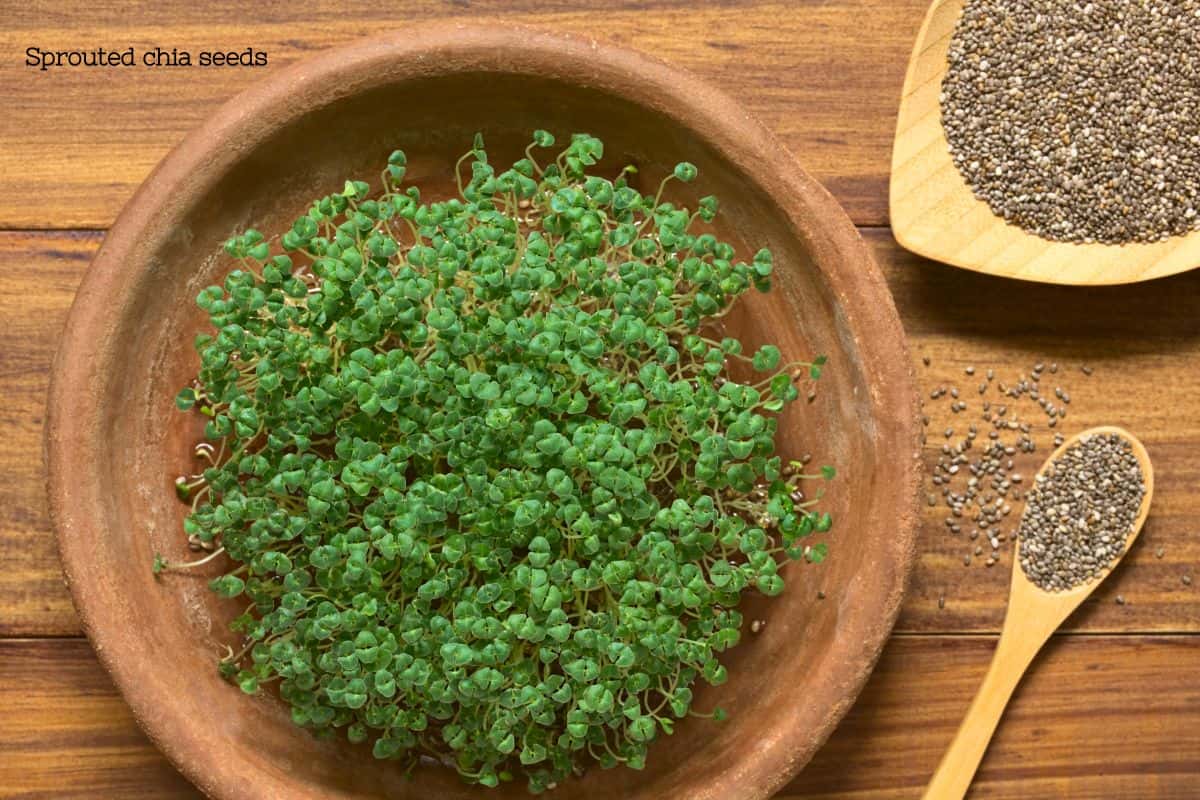
Sprouted chia seeds have a slightly nutty and mild flavor, which is more pronounced than their unsprouted counterparts. This nuttiness adds depth to various dishes without overwhelming other flavors. The texture of sprouted chia seeds is tender yet crunchy, providing a delightful contrast in different recipes.
Ground Chia Seeds:
Ground chia seeds, made from either sprouted or unsprouted chia, present a different aspect of this versatile seed. When ground, chia seeds take on a finer, more absorbent quality, making them ideal for certain culinary applications.
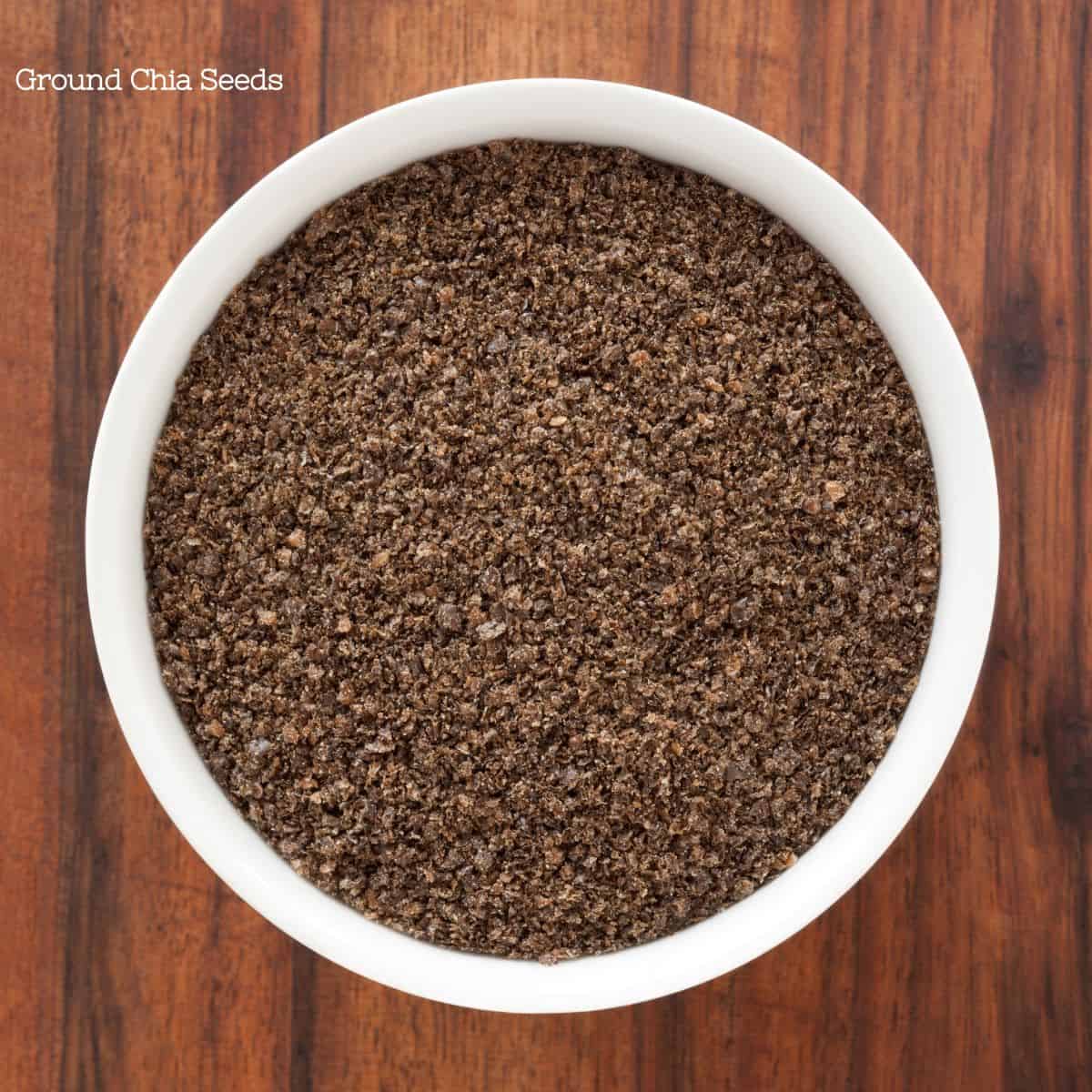
- Texture and Flavor: Ground chia seeds have a finer texture and a more subtle flavor compared to whole-sprouted seeds. This makes them suitable for recipes where a smooth consistency is desired.
- Binding Agent: In baking, ground chia seeds can act as a binding agent, similar to how they function when soaked. This property makes them an excellent egg replacement in vegan baking.
Incorporating Ground Chia Seeds in Cooking:
Ground chia seeds can be used in a variety of ways in the kitchen. Their ability to absorb liquid and form a gel-like substance makes them ideal for puddings and as a thickener in sauces and soups. When used in baking, they add nutritional value while also helping to bind ingredients together, perfect for creating healthier versions of cakes, cookies, and bread.
Combining Sprouted and Ground Chia Seeds in Dishes:
The dual use of sprouted and ground chia seeds opens up a world of culinary possibilities. While sprouted chia seeds can be added to salads, smoothies, and yogurt for a crunchy texture and nutty taste, ground chia seeds are perfect for creating smoother textures in baked goods and desserts.
For example, in a chia pudding, sprouted chia seeds can be used for a crunchy topping, while ground chia seeds can thicken the pudding base. In baked goods, ground chia seeds can be used as a flour substitute, adding a nutritional boost along with its binding properties.
In summary, both sprouted and ground chia seeds offer diverse options in the kitchen. Whether you're looking for a crunchy addition to your salads and smoothies or a nutritious binder for your baking needs, chia seeds in their various forms are a versatile and healthy choice. Their subtle nutty flavor and ability to enhance the texture of dishes make them a favorite among health-conscious cooks and chefs.
Who Should Not Consume Chia Seeds
Before making any changes to your diet, especially if you plan to introduce chia seeds, it's essential to consult with your healthcare professional. While chia seeds are beneficial for many, they may not be suitable for everyone.
Individuals with Swallowing or Digestive Issues:
- Chia seeds expand and form a gel when soaked, which can be a choking hazard for those with swallowing difficulties. Additionally, their high fiber content might cause digestive discomfort for some people.
People with Allergies:
- Rarely, chia seeds can trigger allergic reactions. Those with a history of food allergies should be cautious.
Those on Certain Medications:
- Due to their blood-thinning properties, individuals on blood thinners should consult their doctor. Similarly, those on diabetes medication should be aware of chia seeds' potential to lower blood sugar levels.
Pregnant and Breastfeeding Women:
- Limited research is available on the effects of chia seeds during pregnancy and breastfeeding. It's advisable to seek medical advice before increasing chia seed intake. In my personal experience, I felt strange when consuming chia seeds during pregnancy, so I avoided it. I suspect it was a blood pressure shift for me. My best advice is to always listen to your body and adjust accordingly!
Individuals with Low Blood Pressure:
- Chia seeds can lower blood pressure, so those with hypotension or on blood pressure medications should take note.
In all cases, moderation and guidance from a healthcare provider are crucial when incorporating chia seeds into your diet.
FAQ
The 'best' form of chia seeds largely depends on individual dietary needs and preferences. Unsprouted chia seeds that have been soaked or hydrated are great for general use, especially in puddings, smoothies, or as egg replacements. Sprouted chia seeds have a different nutritional profile, with some nutrients being more bioavailable. For those seeking to maximize nutrient absorption, sprouted chia seeds might be the better choice.
Yes, you can sprout chia seeds purchased from the grocery store. Most chia seeds, unless heat-treated or processed, have the potential to sprout. To ensure successful sprouting, look for raw, whole chia seeds and follow proper sprouting techniques.
All chia seeds generally offer similar health benefits, including being rich in fiber, omega-3 fatty acids, and various micronutrients. However, organic chia seeds can be considered healthier as they are grown without synthetic pesticides and fertilizers, reducing your exposure to potentially harmful chemicals.
When purchasing chia seeds, consider the following:
Organic Certification: Opt for organic chia seeds to avoid exposure to pesticides and fertilizers.
Purity: Ensure there are no added fillers or ingredients. Pure chia seeds should be uniform in appearance.
Packaging: Look for airtight, sealed packaging to maintain freshness.
Color and Smell: Good quality chia seeds are black or white and have a mild, nutty smell. Avoid any that have a rancid smell or an unusual color.
Choosing the right chia seeds and form can significantly impact your nutritional intake and culinary experiences. Whether you prefer sprouted or unsprouted, always opt for high-quality, preferably organic chia seeds for the best health benefits.
Final Thoughts
In exploring the fascinating world of chia seeds, from their sprouted wonders to their ground versatility, we've uncovered a treasure trove of nutritional benefits and culinary delights. Whether you're a seasoned chia enthusiast or new to this superfood, the potential applications in your daily meals and snacks are boundless.
I invite you to share your experiences and favorite ways to incorporate chia seeds into your diet in the comments below. Have you tried sprouting chia seeds at home? Or perhaps you have a beloved recipe that uses ground chia seeds? Your insights and personal touches are what makes this community so special and informative.
If you've found value in this guide and wish to stay updated with more insights into healthy living, nutritious foods, and wellness tips, don't forget to subscribe to our updates. Also, follow us on our social media platforms where we continue the conversation and share daily inspiration for a mindful and healthy lifestyle.
Be well,
Natalie

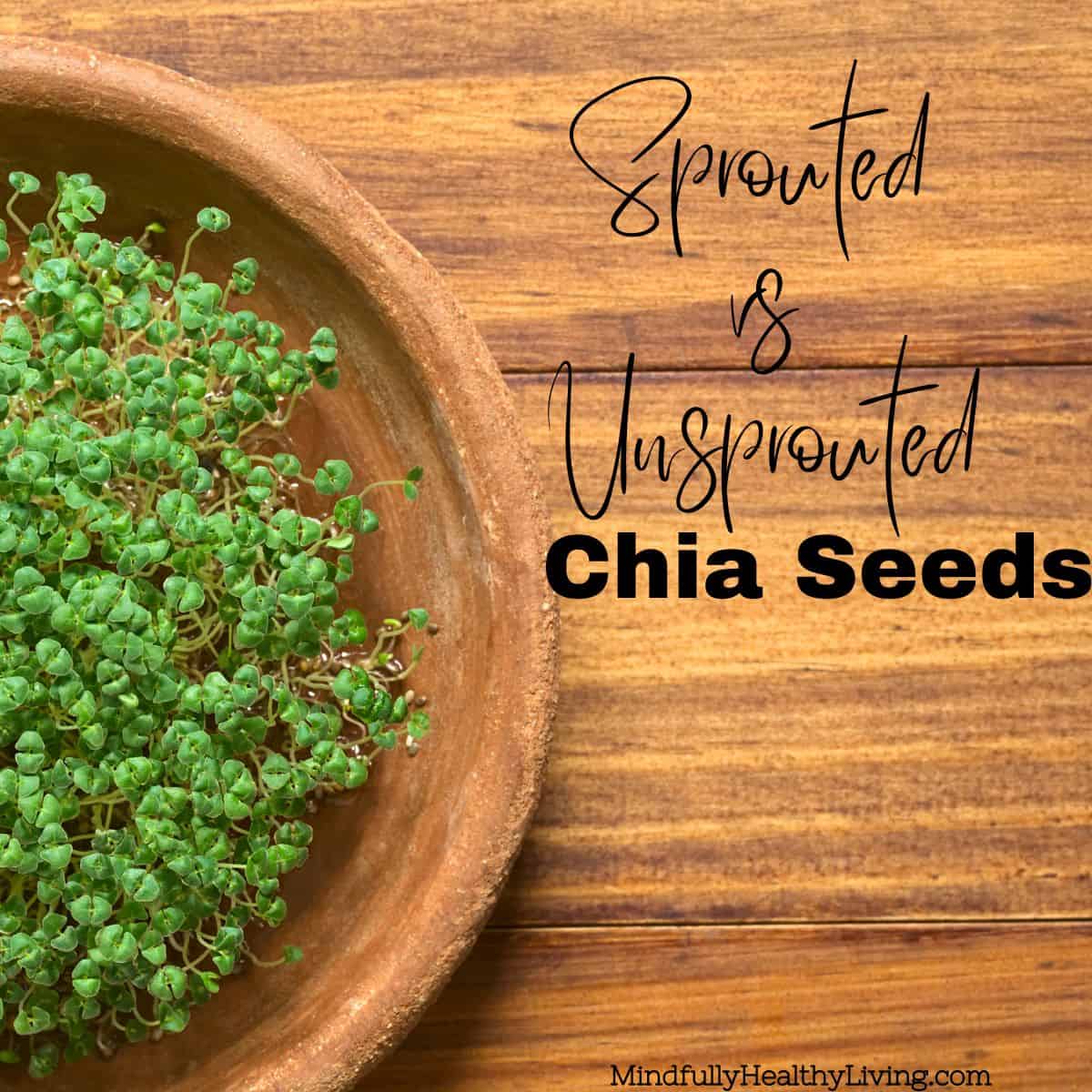
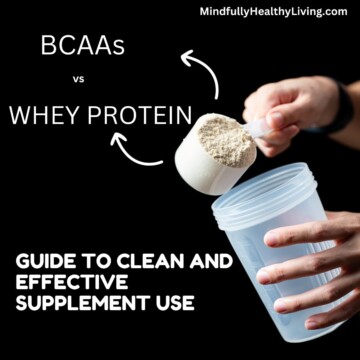
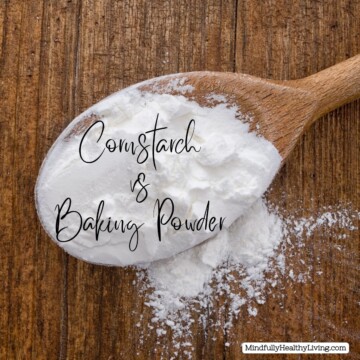
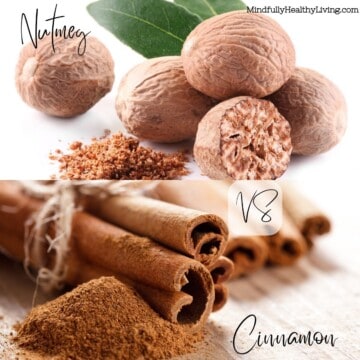

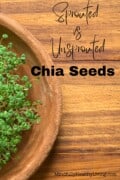
Trichelle Nieuwenhuizen says
I am in love with chia seeds. I have them for breakfast every morning and eat sprouts in my salad. It was great to see the actual benefits!
Natalie Perry says
Wonderful! Chia seeds are so versatile and beneficial!